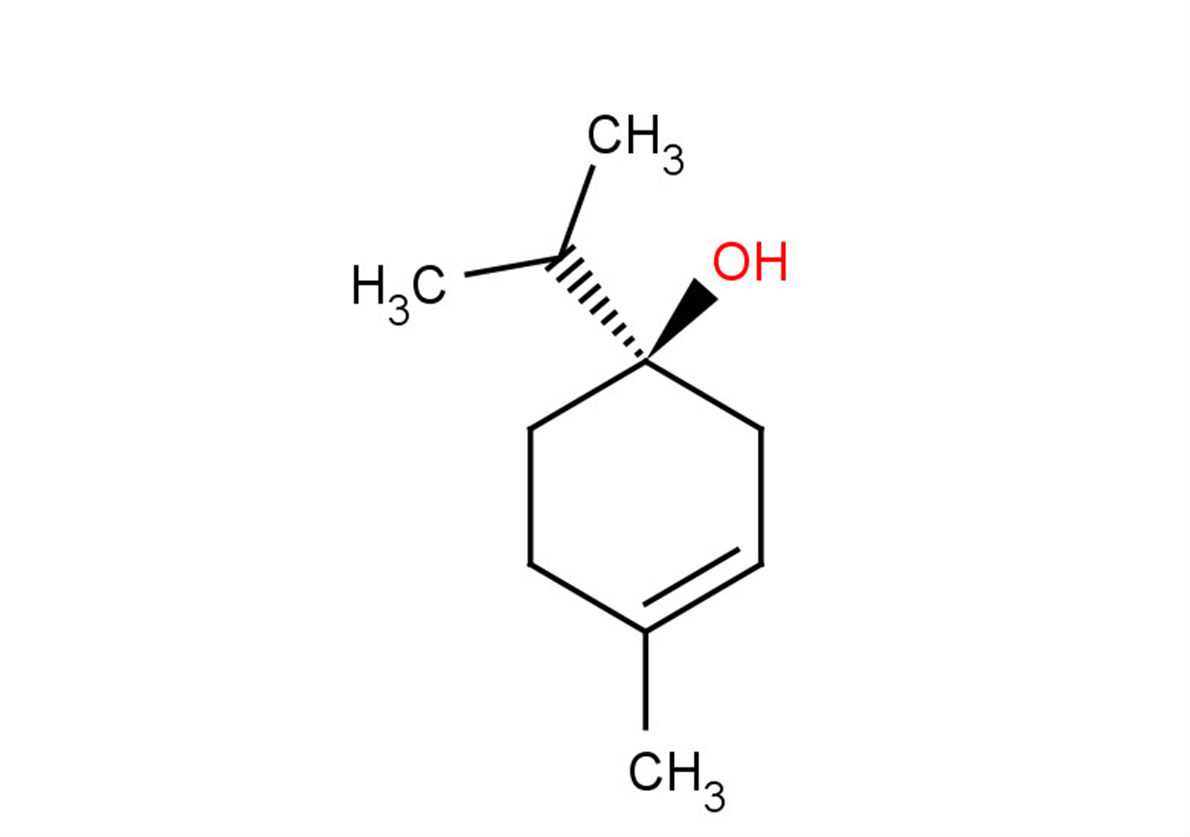
(-)-TERPINEN-4-OL
CAS No. 20126-76-5
(-)-TERPINEN-4-OL ( —— )
产品货号. M23903 CAS No. 20126-76-5
Terpinen-4-ol 可用作针对金黄色葡萄球菌的抗菌剂和抗生物膜剂。
纯度: >98% (HPLC)
 COA
COA
 Datasheet
Datasheet
 HNMR
HNMR
 HPLC
HPLC
 MSDS
MSDS
 Handing Instructions
Handing Instructions
| 规格 | 价格/人民币 | 库存 | 数量 |
| 5MG | ¥405 | 有现货 |


|
| 10MG | ¥608 | 有现货 |


|
| 25MG | ¥1037 | 有现货 |


|
| 50MG | ¥1555 | 有现货 |


|
| 100MG | ¥2325 | 有现货 |


|
| 200MG | 获取报价 | 有现货 |


|
| 500MG | 获取报价 | 有现货 |


|
| 1G | 获取报价 | 有现货 |


|
生物学信息
-
产品名称(-)-TERPINEN-4-OL
-
注意事项本公司产品仅用于科研实验,不得用于人体或动物的临床与诊断
-
产品简述Terpinen-4-ol 可用作针对金黄色葡萄球菌的抗菌剂和抗生物膜剂。
-
产品描述Terpinen-4-ol can be used as an antibacterial and antibiofilm agent against Staphylococcus aureus.
-
体外实验——
-
体内实验——
-
同义词——
-
通路GPCR/G Protein
-
靶点Antibacterial
-
受体antibacterial
-
研究领域——
-
适应症——
化学信息
-
CAS Number20126-76-5
-
分子量154.25
-
分子式C10H18O
-
纯度>98% (HPLC)
-
溶解度In Vitro:?DMSO : 100 mg/mL (648.30 mM)
-
SMILESCC(C)[C@@]1(CC=C(C)CC1)O
-
化学全称——
运输与储存
-
储存条件(-20℃)
-
运输条件With Ice Pack
-
稳定性≥ 2 years
参考文献
1.Cordeiro L, Figueiredo P, Souza H, Sousa A, Andrade-Júnior F, Medeiros D, Nóbrega J, Silva D, Martins E, Barbosa-Filho J, Lima E. Terpinen-4-ol as an Antibacterial and Antibiofilm Agent against Staphylococcus aureus. Int J Mol Sci. 2020 Jun 25;21(12):4531.
产品手册




关联产品
-
Buramate
Buramate 具有神经保护和抗惊厥活性。
-
Sulfisoxazole acetyl
乙酰磺胺异恶唑是一种具有抗菌活性的化合物。 Sulfiso恶唑乙酰基是一种具有抗菌活性的Sulfiso恶唑衍生物。 Sulfisoxoxazo acetate 是二氢蝶酸合成酶的抑制剂。
-
Antimicrobial agent-...
Antimicrobial agent-22 (THI 6c) 是一种多靶点广谱抗菌剂。Antimicrobial agent-22 具有低细胞毒性、溶血性、快速杀菌能力和良好的抗生物膜活性。



 021-51111890
021-51111890 购物车()
购物车()
 sales@molnova.cn
sales@molnova.cn







